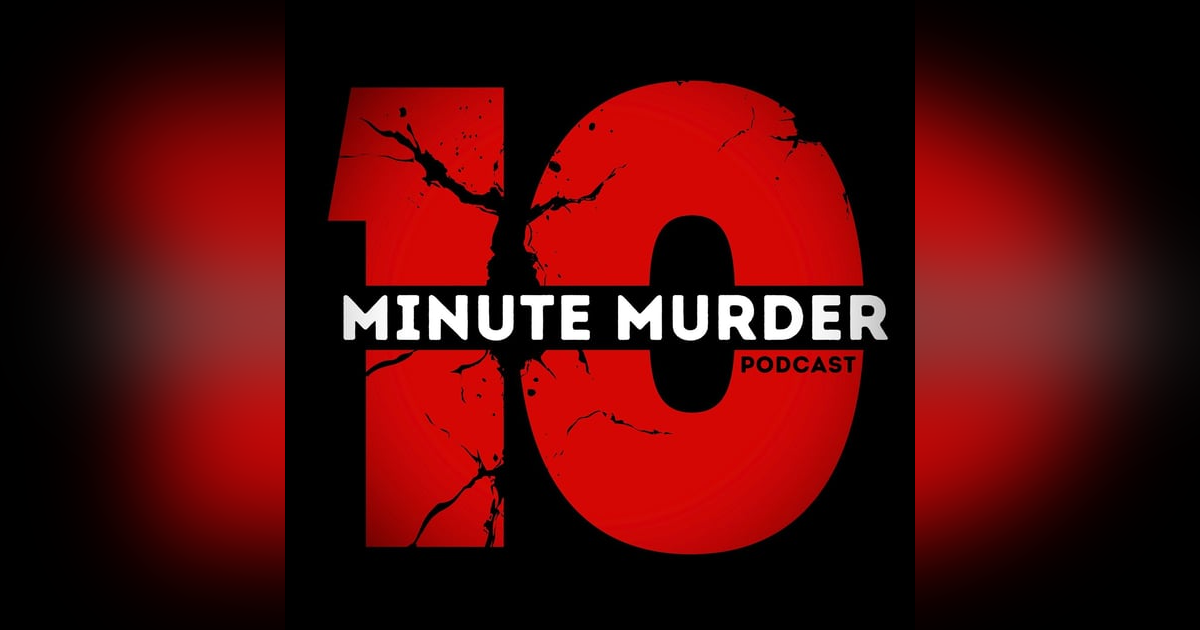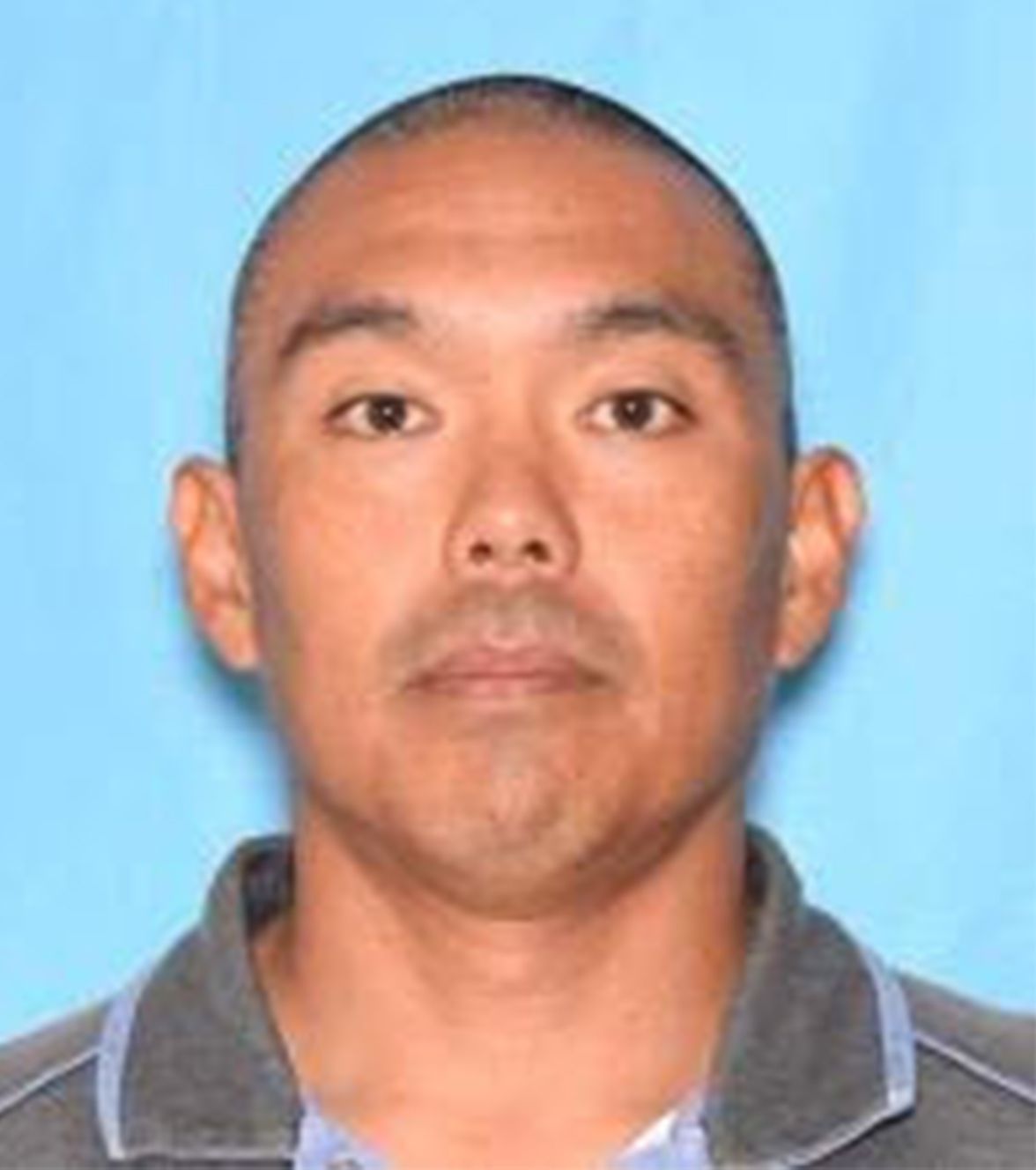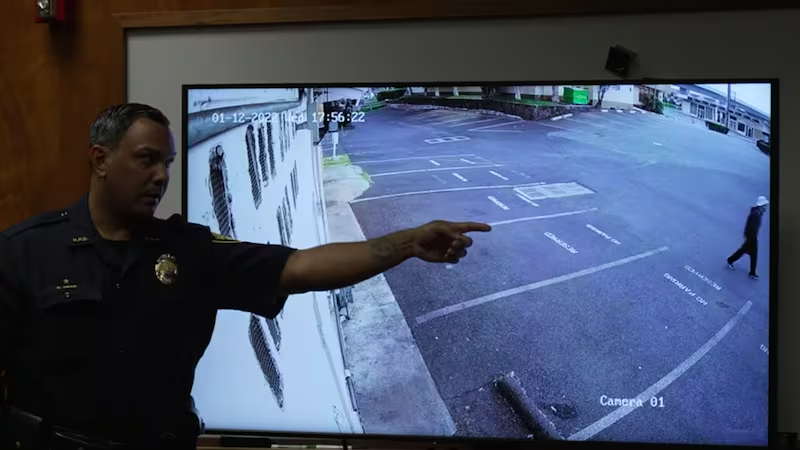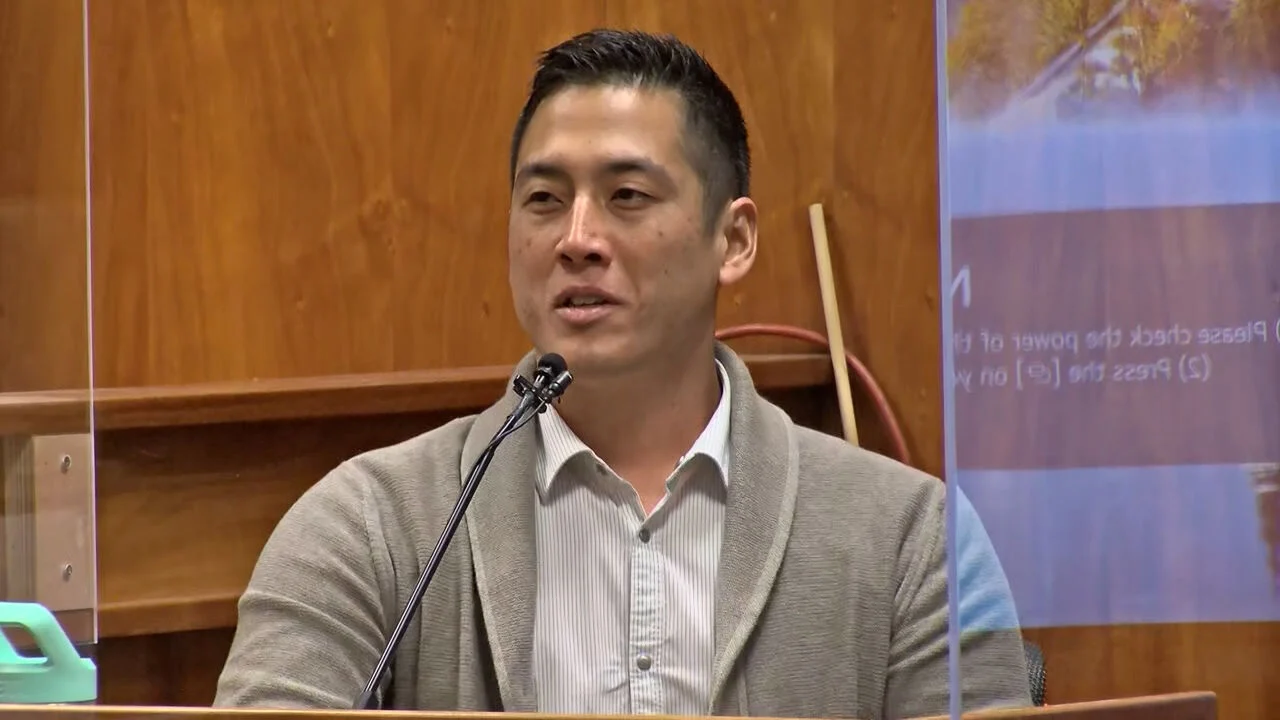Hawaii's Bucket Hat Killer: When Traditional Forensics Failed and AI Solved the Case
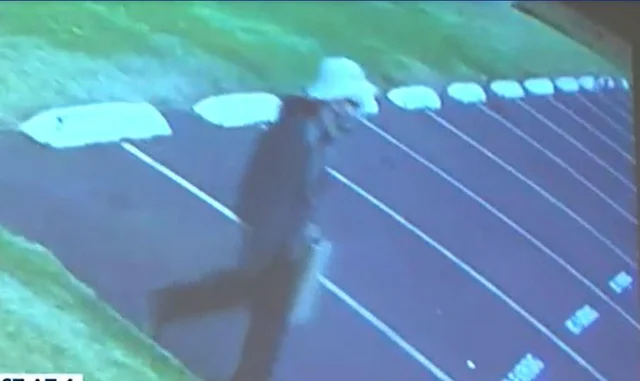
A bucket hat. Surveillance footage. And DNA evidence that traditional forensics couldn't crack. When a jealous husband stood trial for murder, the jury couldn't decide. But then prosecutors used technology that's rewriting the rules of criminal justice, and suddenly, a 16.4 trillion to one match appeared where there had been nothing. This is the story of the Bucket Hat Killer.
THE BUCKET HAT MURDER: HOW CUTTING-EDGE DNA TECHNOLOGY SOLVED A HAWAII LOVE TRIANGLE KILLING
When Love, Betrayal, and a Dropped Hat Collided in Waipahu
January 2022. Waipahu, Hawaii. Jon Tokuhara, a 47-year-old acupuncturist, was found dead on the floor of his own clinic. He'd been shot four times, including multiple shots to the face. The brutality of it suggested something deeply personal. This wasn't a robbery gone wrong or a random act of violence. Someone wanted Jon Tokuhara dead, and they wanted him to suffer.
Next to his body, police found nearly $4,000 in cash, wrapped up and labeled "herbs." The money was untouched. Whatever drove this killing, it wasn't about the cash.
The Honolulu Police Department started investigating immediately, and what they uncovered was a story that prosecutors would later describe as "as old as time." Jon Tokuhara had been having an affair with a married woman. That woman's husband was Eric Thompson. And six months before the murder, Thompson had discovered the relationship through Instagram messages and videos.
The Man in the Bucket Hat: Surveillance Footage and a Critical Clue
Surveillance cameras in the area captured something crucial. A man was seen near the clinic around the time of the shooting. He was wearing sunglasses and a distinctive Quiksilver bucket hat. Then, as he fled the scene, he dropped that hat.
A passerby found it and eventually turned it over to police. That bucket hat became the most important piece of physical evidence in the entire case. It also became the namesake for the whole investigation. Dateline would later call their episode "The Bucket Hat Mystery," and the media ran with it. Everyone wanted to know: whose DNA was on that hat?
Eric Thompson was arrested a month after the murder. The case against him seemed straightforward. He had motive. His wife had been sleeping with the victim. He'd known about it for months, stewing in anger and humiliation. The surveillance footage showed someone matching his description at the scene. And there was the hat, dropped right there during the escape.
But proving Thompson's guilt in court would turn out to be far more complicated than anyone expected.
When Traditional DNA Testing Hits a Wall
The Honolulu Police Department's Scientific Investigation Section took the bucket hat and ran DNA analysis on it. They focused on two separate areas of the hat, trying to extract genetic material that could link Thompson to the crime scene.
They used a method called Combined Probability of Inclusion, or CPI. It's a traditional approach that works well for clean, simple DNA samples. But here's the problem: the DNA on that hat wasn't clean or simple. It was a mixture. Multiple people had touched it. The sample was complex, possibly degraded, and low in quantity.
The CPI method struggled. After all the testing, the lab came back with a conclusion that was devastating for prosecutors: "no conclusion." They couldn't definitively say whether Eric Thompson's DNA was on that hat or not.
In a murder trial, "no conclusion" is basically the same as reasonable doubt. And reasonable doubt is exactly what defense attorneys live for.
The First Trial: A Defense Built on Doubt and Alternative Theories
Thompson's defense team, led by attorney David Hayakawa, went aggressive. They didn't just argue that the evidence was inconclusive. They built an entire counter-narrative about who Jon Tokuhara really was.
According to the defense, Tokuhara wasn't just a guy who made one mistake with a married woman. He was someone with a pattern. He'd been involved with multiple women, many of them married or in relationships. The defense painted him as a serial homewrecker, someone who left a trail of angry, betrayed partners in his wake.
And that cash found next to his body? The defense suggested Tokuhara might have had gambling debts or other shady dealings. Maybe someone from that world had a reason to kill him. The defense argued that investigators had tunnel vision. They saw the obvious motive, the love triangle, and they stopped looking anywhere else.
But the most powerful weapon the defense had was that inconclusive DNA result. Without a definitive link to the bucket hat, the prosecution's case was entirely circumstantial. Sure, Thompson had motive. Sure, someone who looked like him was on that surveillance footage. But could they prove beyond a reasonable doubt that he was the killer?
The jury couldn't decide. In August 2023, after deliberating, they announced they were hung. The judge declared a mistrial.
The prosecution had lost, not because the jury thought Thompson was innocent, but because they couldn't be certain enough to convict.
The Forensic Pivot: Enter Probabilistic Genotyping
After the mistrial, the prosecution knew they needed something more. They couldn't just retry the case with the same evidence and expect a different result. They needed to solve the DNA problem.
So they turned to a company called Cybergenetics and a software program called TrueAllele.
TrueAllele is a probabilistic genotyping system. Instead of using the binary, yes-or-no approach of traditional methods like CPI, it uses complex statistical algorithms to analyze messy DNA mixtures. It can work with degraded samples, low quantities of genetic material, and situations where multiple people's DNA is all mixed together.
The prosecution sent the exact same DNA data from the bucket hat to Cybergenetics for reanalysis. They weren't collecting new evidence. They were using new technology to interpret the evidence they already had.
The results were staggering.
Where the HPD lab had said "no conclusion," TrueAllele said Eric Thompson's DNA was on that hat with match statistics of 199 million to one. But that wasn't even the most powerful number. Another analysis came back with a match statistic of 16.4 trillion to one.
To put that in perspective, the software also analyzed the DNA of the passerby who found the hat. That person's match statistic came back as greater than 10 octillion to one. That's a one followed by 28 zeros. Which makes sense because that person definitely touched the hat.
But 16.4 trillion to one? That's not reasonable doubt. That's scientific certainty.
The Legal Battle Over the Technology Itself
Thompson's new defense team, Nelson Goo and Susan Arnett, immediately recognized the problem. If that 16.4 trillion to one statistic made it in front of a jury, their client was finished. So they did the only thing they could do: they challenged the admissibility of the evidence itself.
Throughout 2024, the defense and prosecution fought in pre-trial hearings over whether TrueAllele results should even be allowed in court. The defense questioned the software's methodology, its reliability, and its scientific validity. This was essentially a Daubert challenge, named after a landmark Supreme Court case about the admissibility of scientific evidence.
The stakes were enormous. If the judge ruled against the prosecution, the TrueAllele results would be thrown out, and they'd be right back where they started: facing a retrial with inconclusive DNA evidence. But if the judge ruled in favor of the prosecution, the defense would have no answer to that 16.4 trillion to one number.
On December 3, 2024, the judge made the ruling. The TrueAllele evidence was admissible.
The defense had just over two months before the retrial to figure out how to overcome scientific evidence that was, for all practical purposes, irrefutable.
The Second Trial: When the Numbers Don't Lie
The retrial began in February 2025. This time, the prosecution had a completely different foundation. Deputy Prosecutor Benjamin Rose still talked about motive, about jealousy and betrayal. But now he had something more: physical proof.
Cybergenetics analyst Jennifer Bracamontes testified on February 5, 2025, explaining the TrueAllele results to the jury. She walked them through how the software worked, how it analyzed the DNA mixture, and what those match statistics meant.
Eric Thompson took the stand again in his own defense. He described the experience as "torturous" and a "nightmare." But this time, the prosecution had a new angle. They pointed out inconsistencies between Thompson's testimony in the first trial and what he was saying now. If the DNA put him at the scene, and his story kept changing, what did that suggest?
The defense tried to maintain their strategy. They still argued that Tokuhara was a "homewrecker" who had ruined Thompson's "perfect life." They still suggested other suspects should have been investigated. But those arguments felt hollow now. The jury wasn't deciding whether Thompson might have done it. They were deciding whether the evidence proved he did.
The victim's friends pushed back against the character assassination. Elton Escobido, who knew Tokuhara, testified that he wasn't a homewrecker at all. He was a nice guy who gave back to his community. The defense's attempt to paint the victim as deserving of his fate didn't land the way it might have in the first trial.
On February 25, 2025, the jury returned its verdict: guilty of second-degree murder and carrying or using a firearm in the commission of a separate felony.
Three days later, on February 28, they sentenced him to life in prison with the possibility of parole.
The Aftermath: A Life Behind Bars and a Legal Battle Ahead
On June 27, 2025, the judge formally sentenced Eric Thompson. He'll serve his sentence at Halawa Correctional Facility in Aiea, Hawaii. Before he can even be considered for parole, he has to serve a minimum of 15 years. But the prosecution has indicated they'll petition the Hawaii Paroling Authority to extend that minimum, given that Tokuhara was shot four times in the face.
Thompson's wife divorced him after the murder. She expressed fear for her own safety. The family that Thompson claimed Tokuhara destroyed was already gone by the time he went to trial.
And then there's the civil lawsuit. Jon Tokuhara's mother, Lilly Tokuhara, filed suit against both Eric Thompson and his ex-wife, Joyce Thompson. The case seeks to hold them financially accountable, targeting whatever assets might remain. It's an attempt to extract some form of justice beyond the criminal conviction, to make sure the consequences extend into every corner of Thompson's life.
But the legal fight isn't over. Thompson's defense team has already announced plans to appeal. And the grounds for that appeal are obvious: they're going to challenge the admissibility of the TrueAllele evidence. They'll argue that the trial court got it wrong, that probabilistic genotyping isn't reliable enough, that the science isn't settled.
What This Case Means for the Future of Forensic Science
Here's why this case matters beyond one murder conviction in Hawaii. The Eric Thompson case is a test case for computational forensics in the American legal system.
For decades, DNA evidence has been the gold standard in criminal justice. But traditional methods have limitations. When samples are mixed, degraded, or low in quantity, older techniques often fail. They return inconclusive results, and cases that should be solvable become unsolvable.
Probabilistic genotyping changes that equation. Software like TrueAllele can take evidence that was previously useless and turn it into proof. The technology has been around for years, but its adoption in courtrooms has been slow and uneven. Defense attorneys challenge it. Judges sometimes exclude it. The legal system is always cautious about new science.
If Thompson's appeal succeeds and an appellate court overturns the conviction, it could set back the use of probabilistic genotyping in Hawaii for years. It would send a message that courts aren't ready to trust computational analysis of DNA, even when that analysis is peer-reviewed and widely accepted in the scientific community.
But if the conviction is upheld, it establishes a precedent. It says that when traditional forensics fail, advanced technology can step in. It opens the door for prosecutors across Hawaii to use these tools in cases where DNA evidence exists but has been too complex to interpret.
This case sits at the intersection of technology and justice, and the outcome of the appeal will ripple through both fields for years to come.
A Story as Old as Time, Solved by Technology as New as Tomorrow
Jealousy. Betrayal. A love triangle that ended in murder. Deputy Prosecutor Benjamin Rose was right when he called this story as old as time. But the resolution? That's as modern as it gets.
Eric Thompson is in prison now, serving a life sentence because a piece of software looked at DNA evidence that human analysts couldn't interpret and returned a number too large to ignore: 16.4 trillion to one.
The bucket hat that a killer dropped while fleeing a murder scene became the key to the entire case. Not because traditional forensics could analyze it, but because computational technology could.
And now, as Thompson's attorneys prepare their appeal, the legal system has to decide: in an age where technology can peer into evidence with a precision humans never could, how much weight should we give those results? How do we balance innovation with caution, progress with skepticism?
The Eric Thompson case doesn't just tell the story of one man's crime and conviction. It tells the story of a justice system adapting to a new era, one algorithm at a time.
